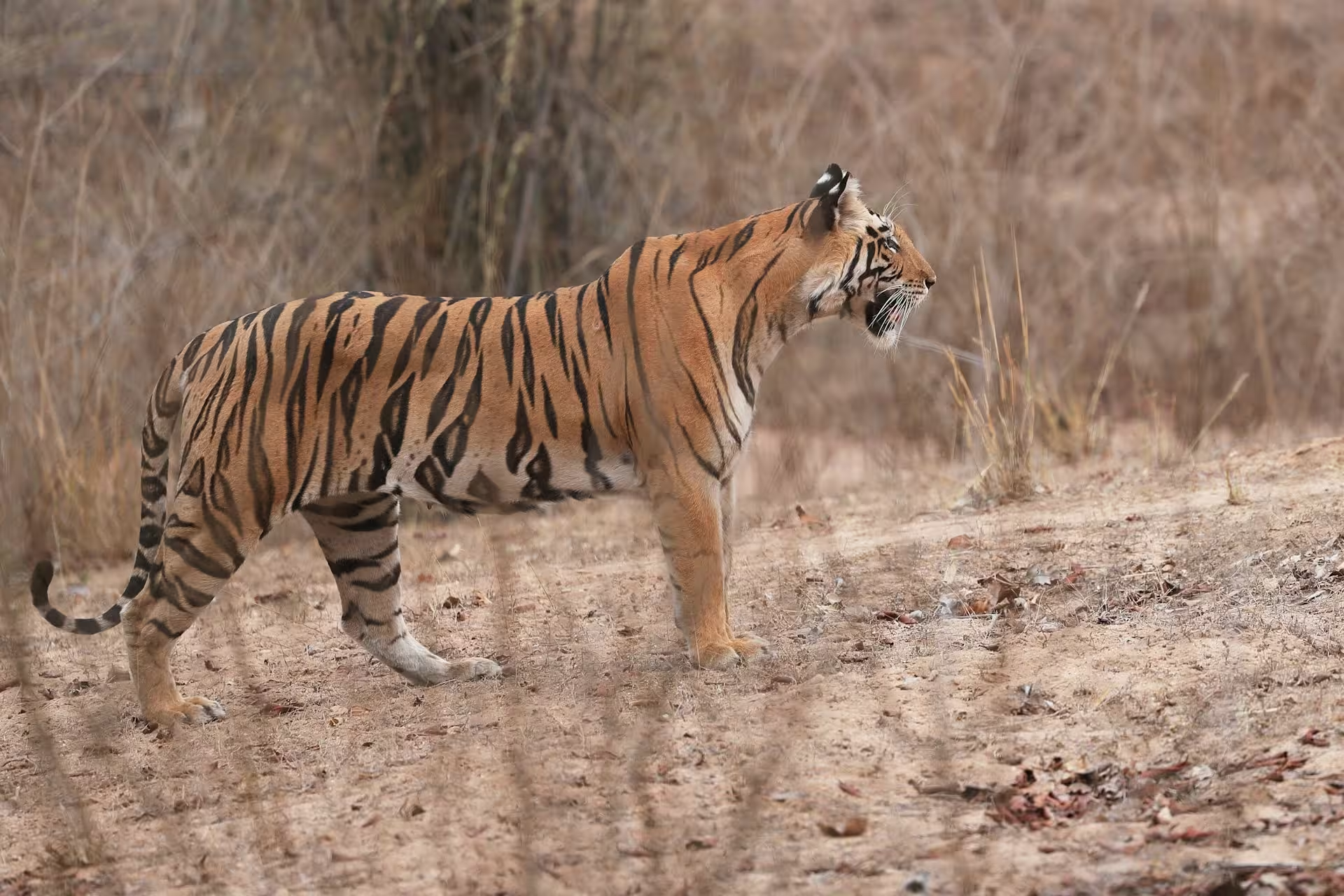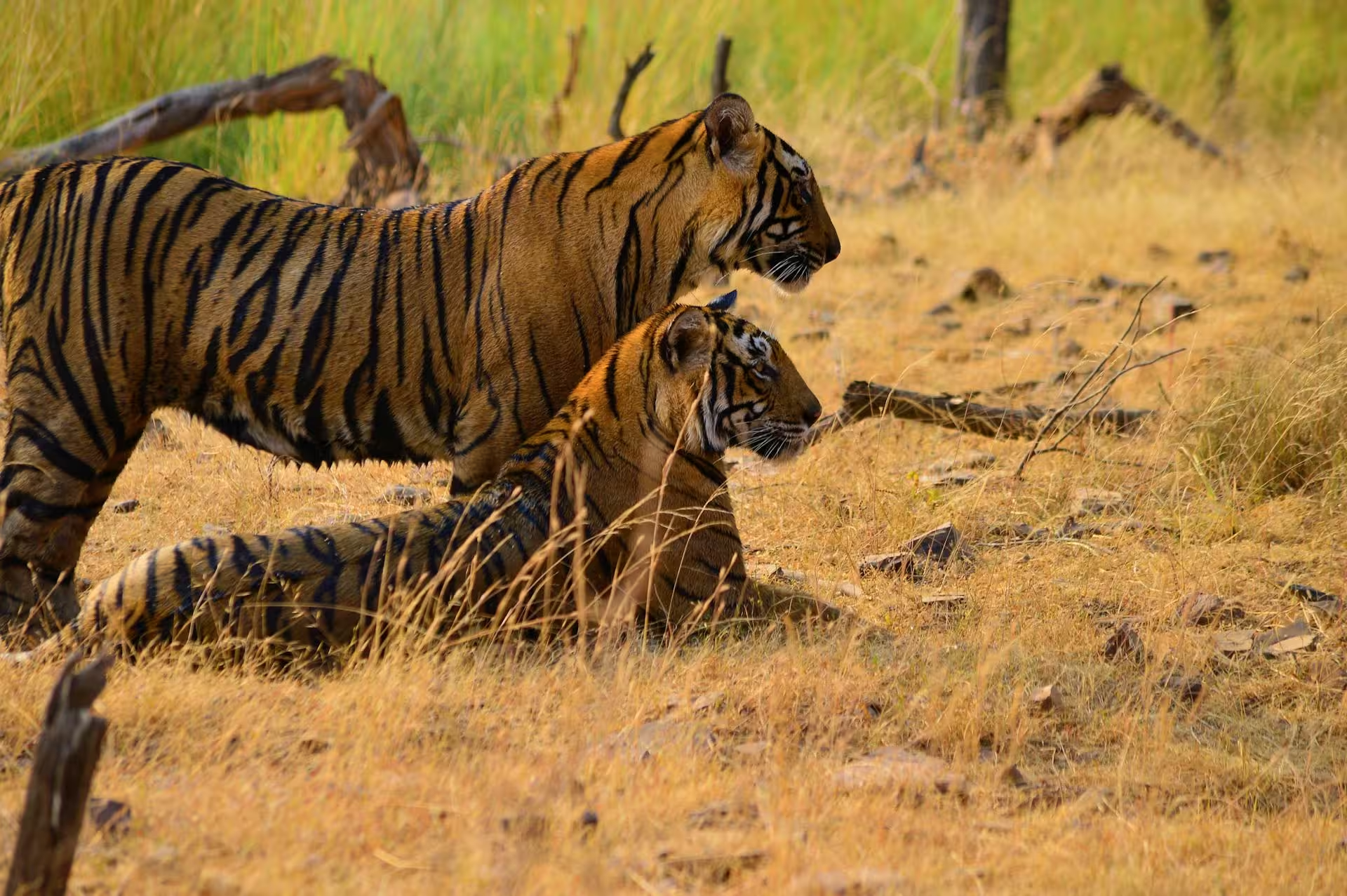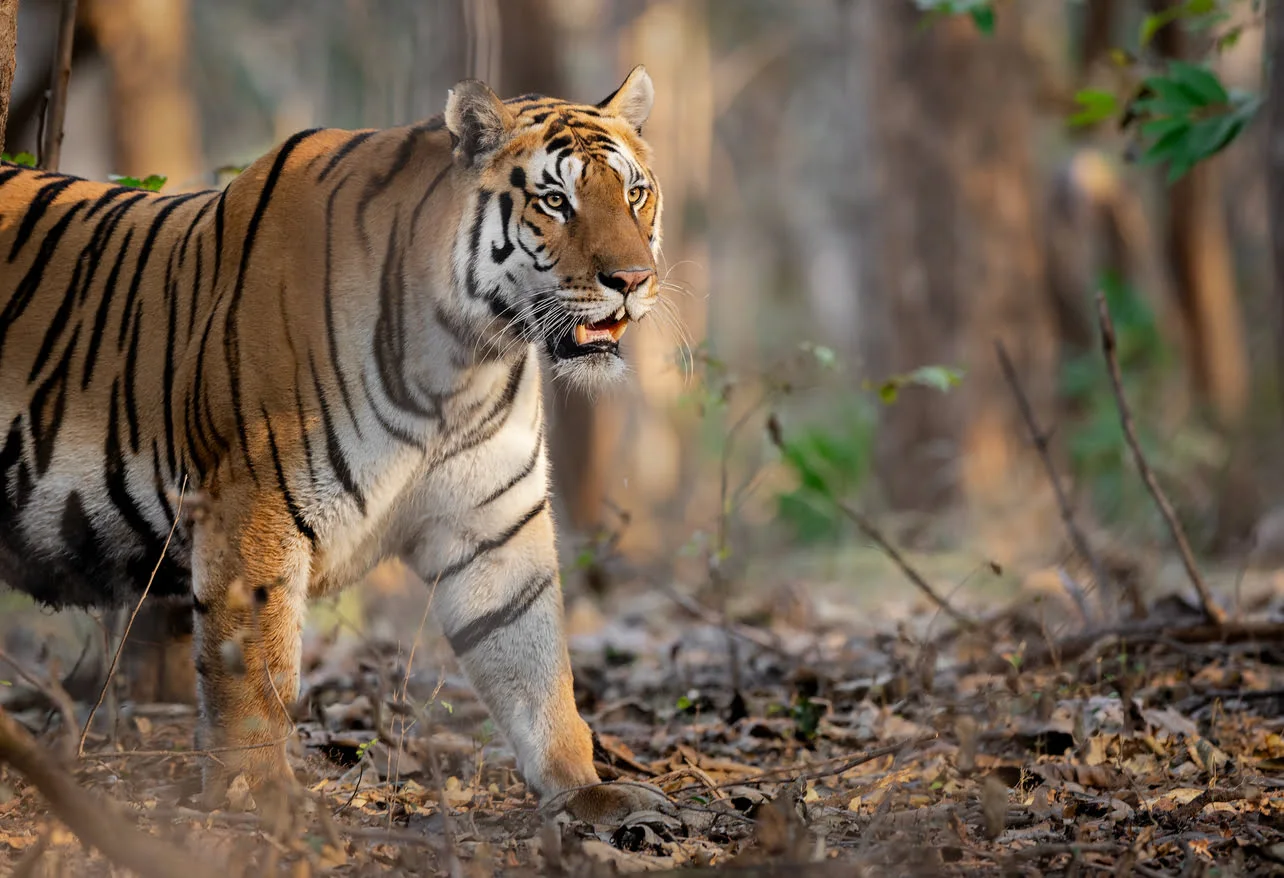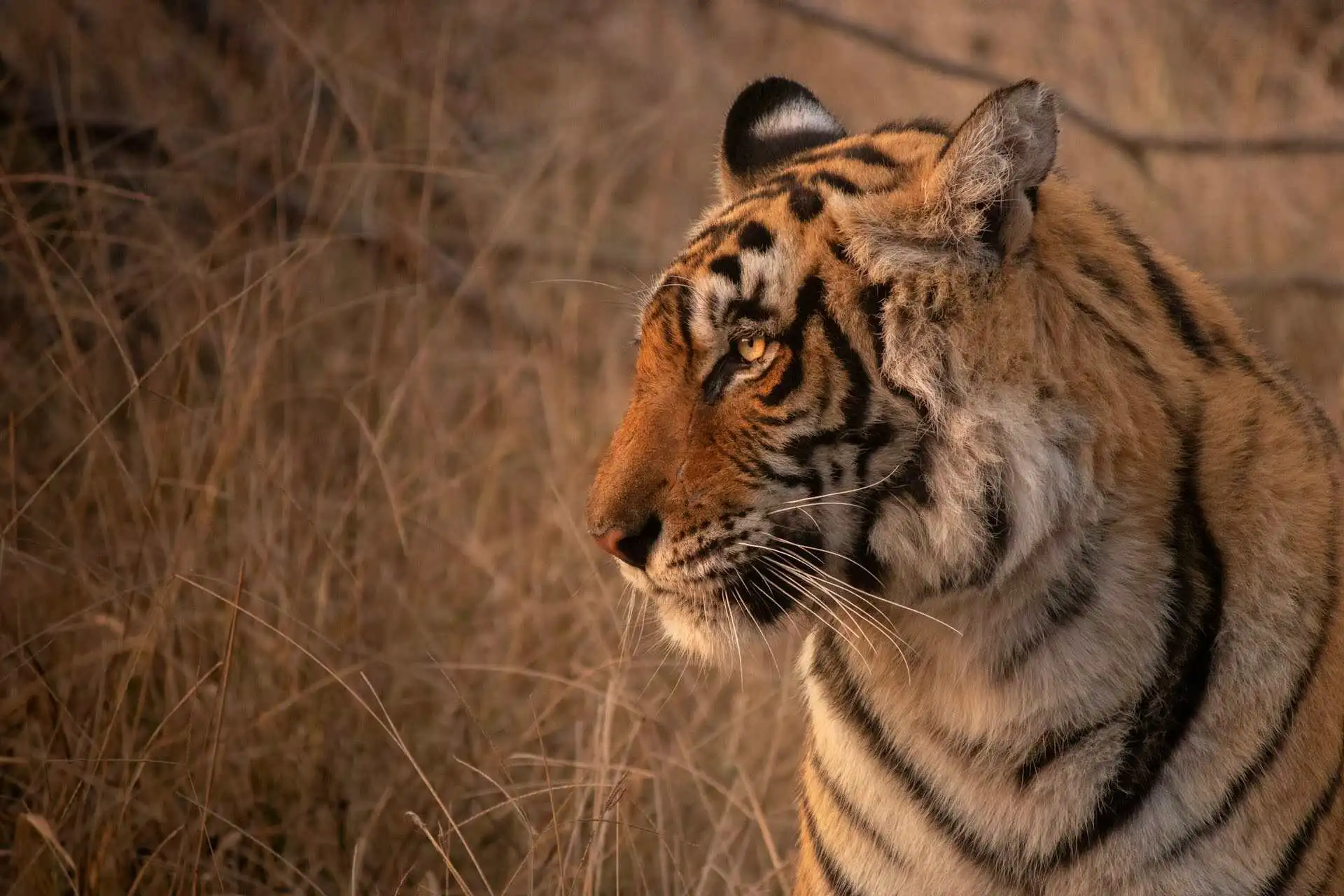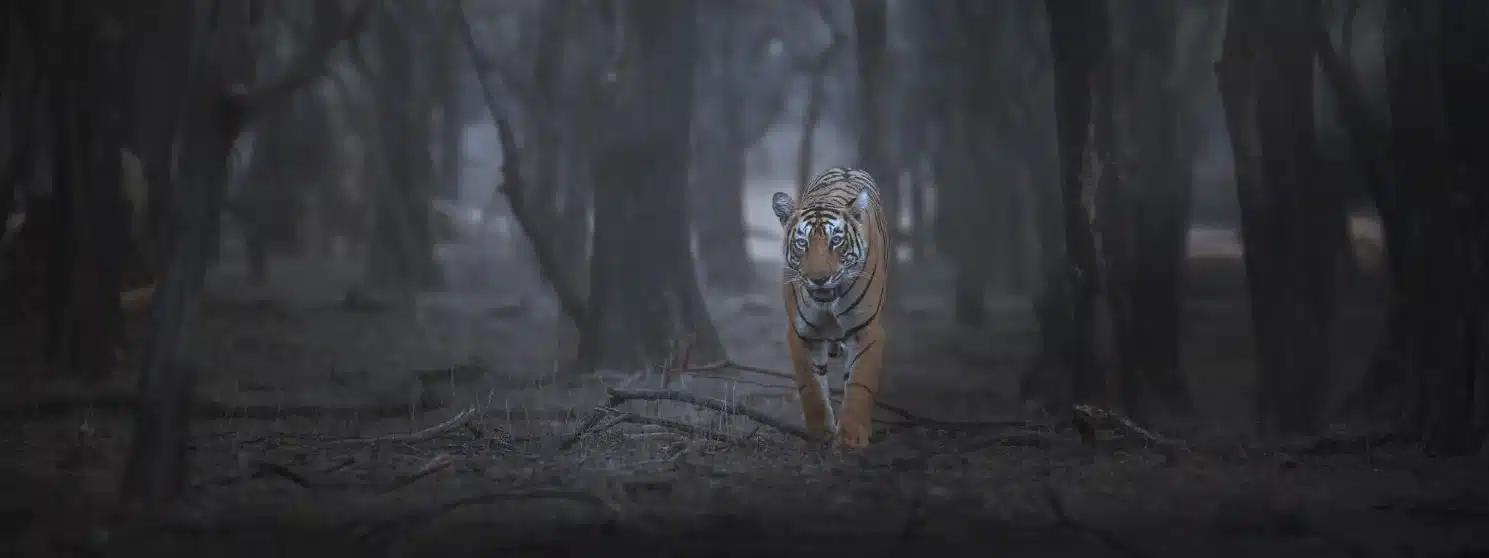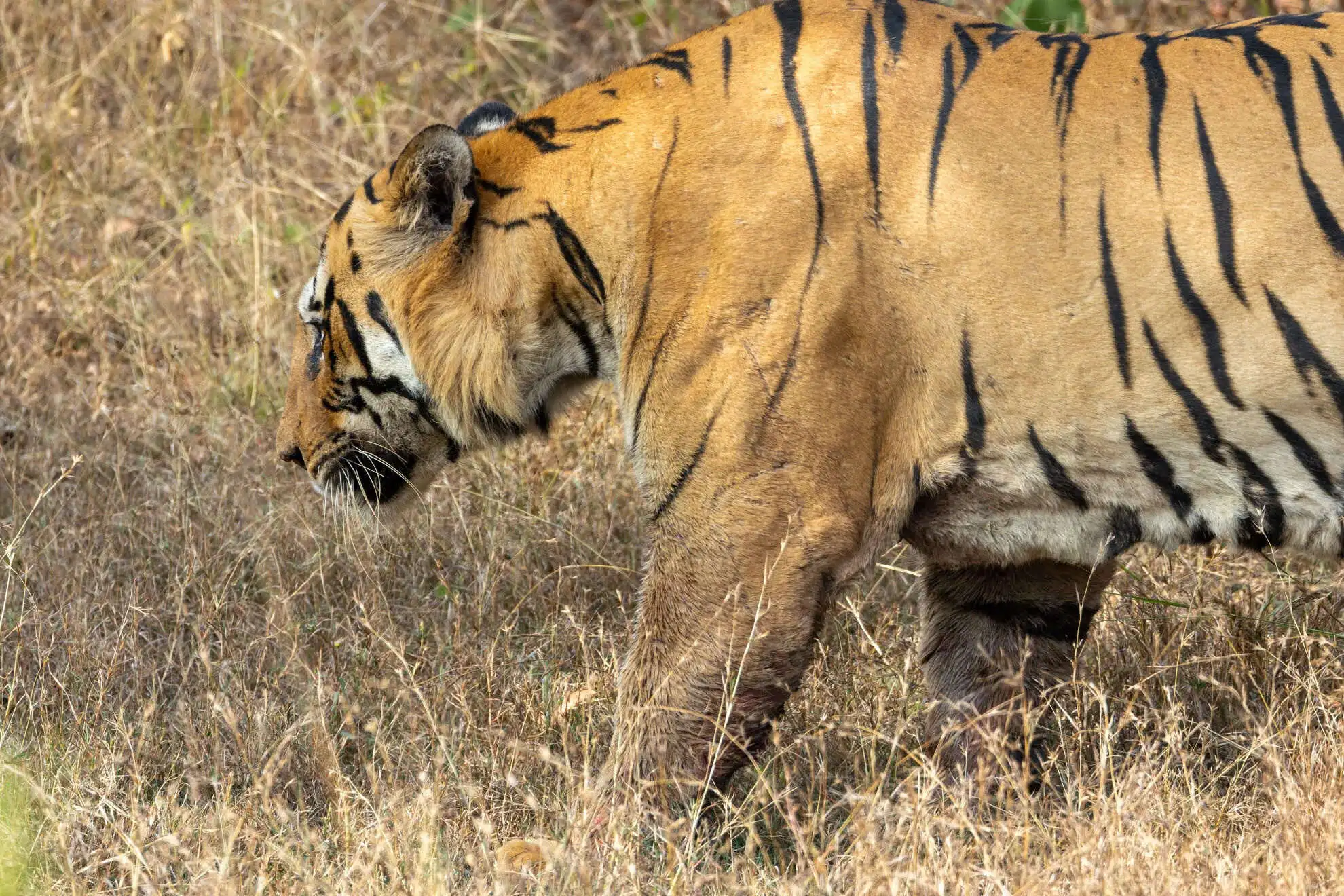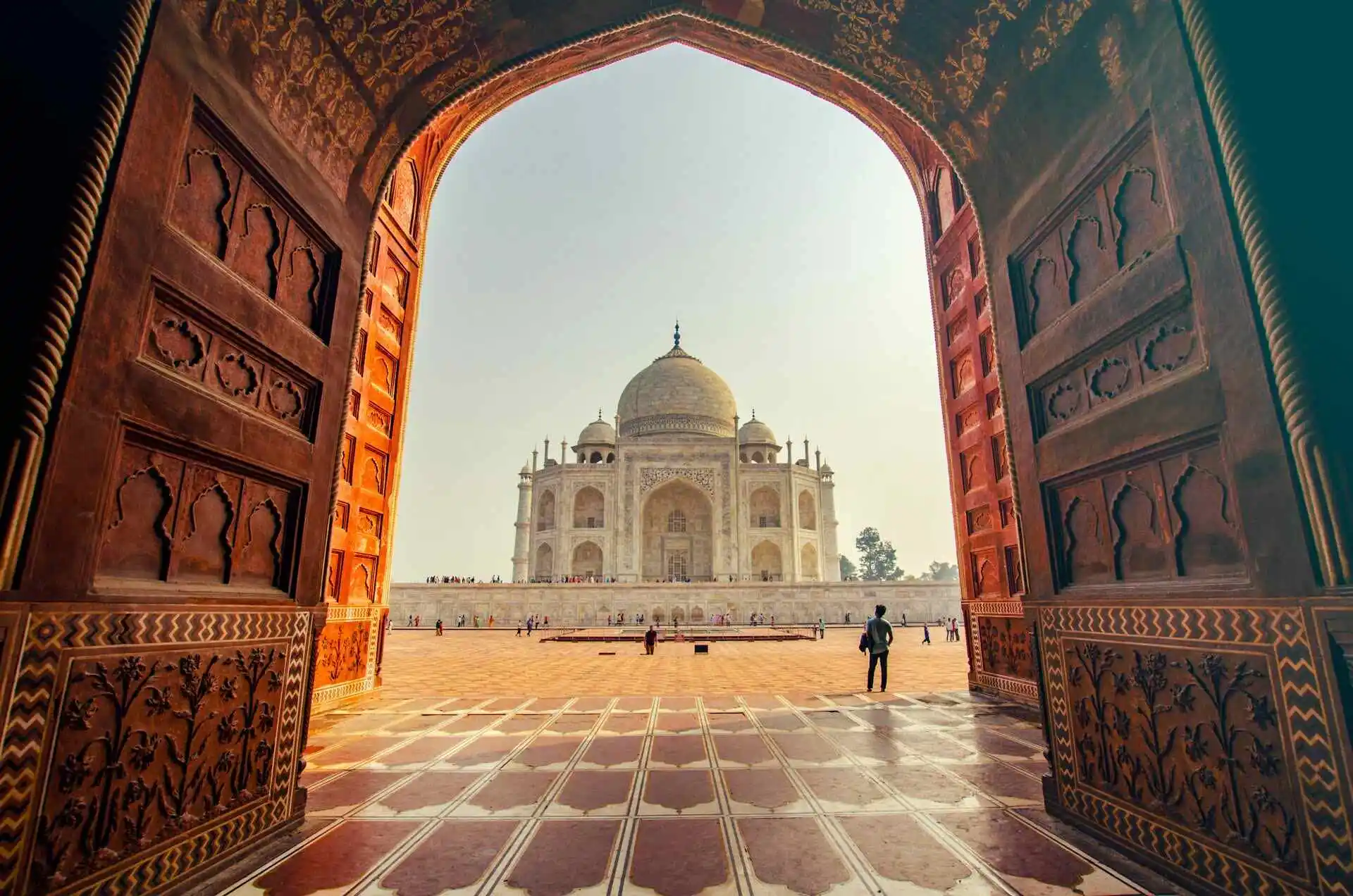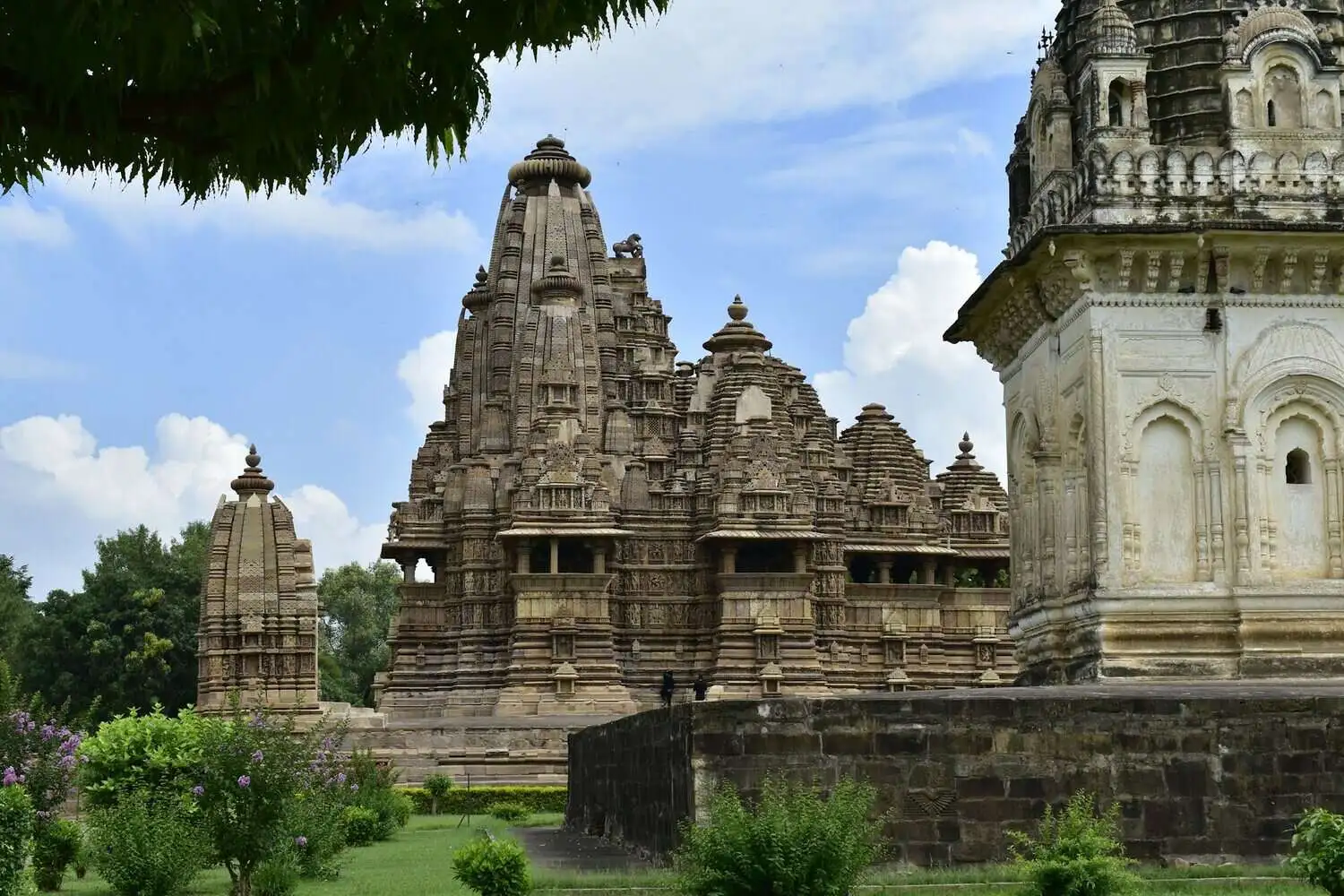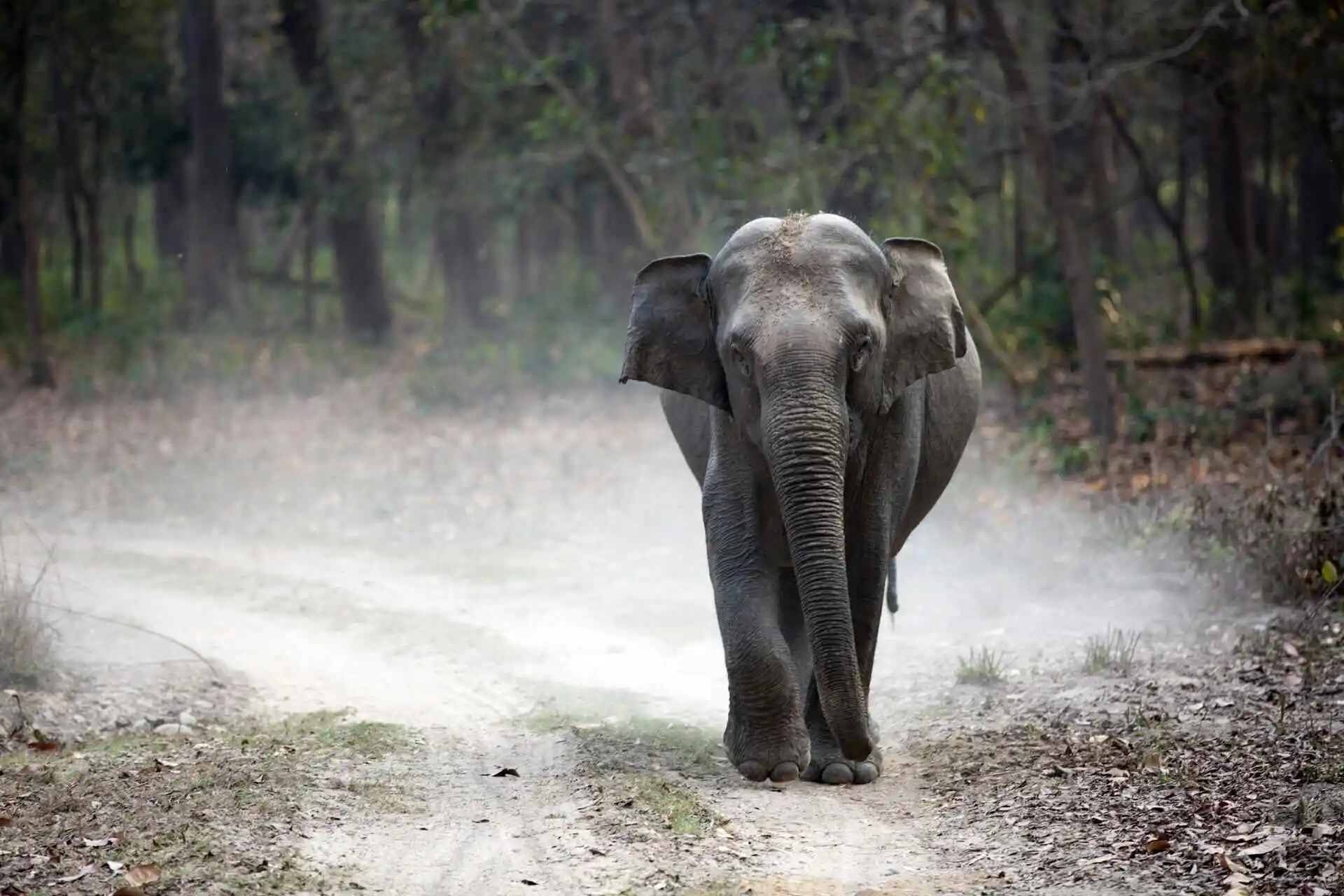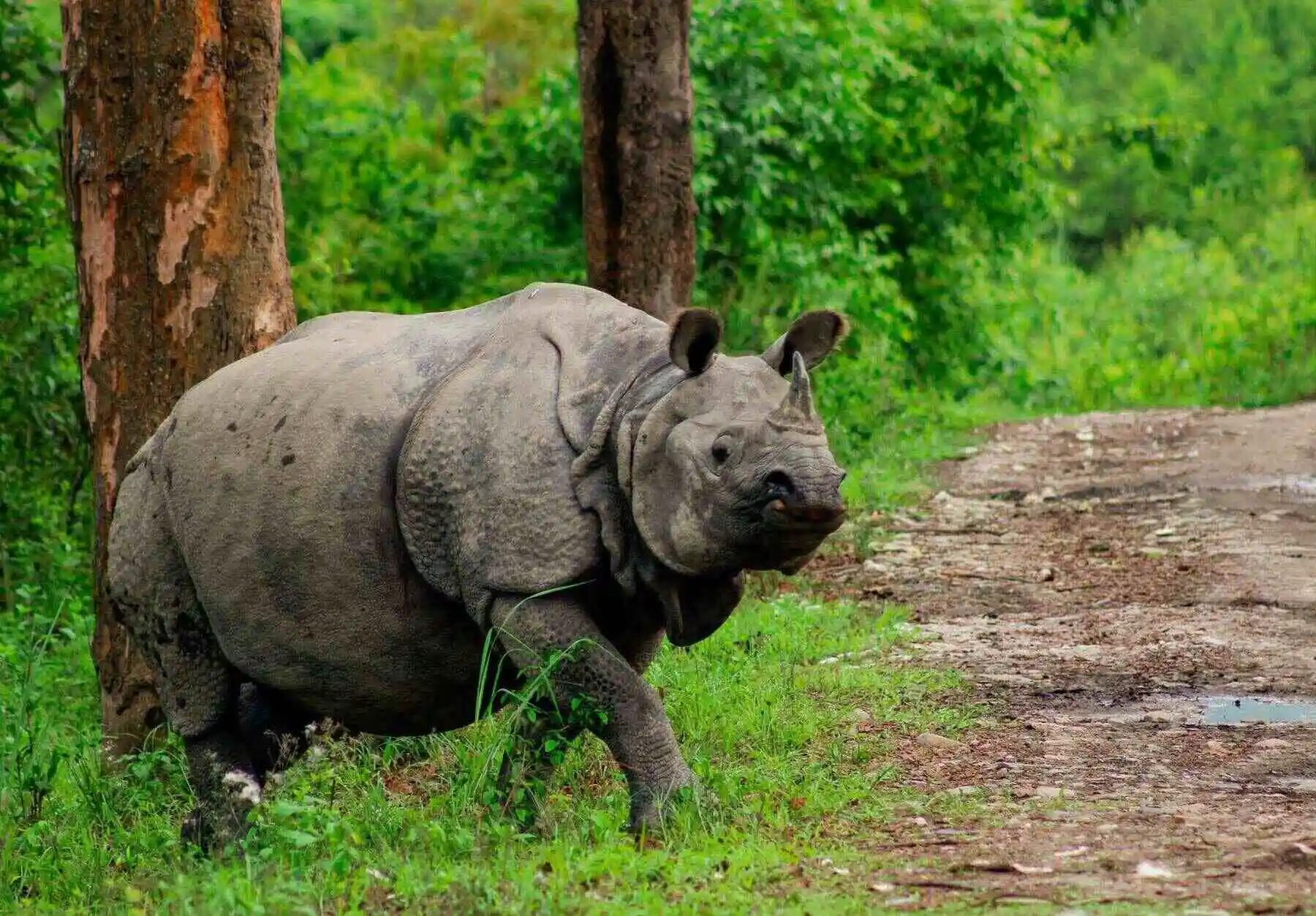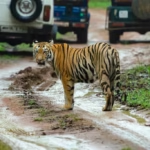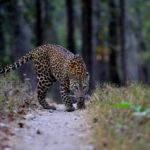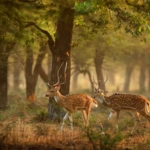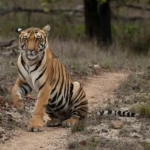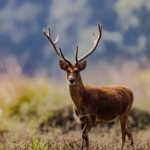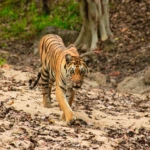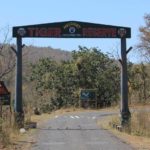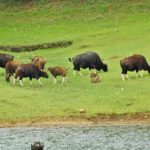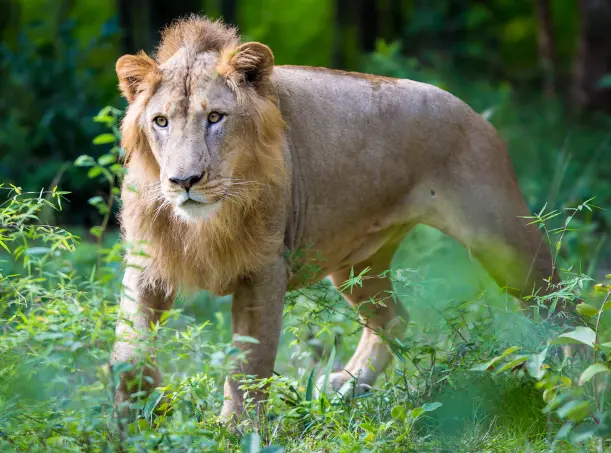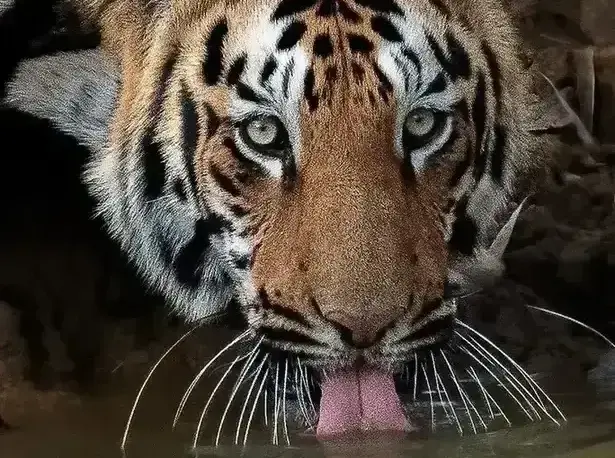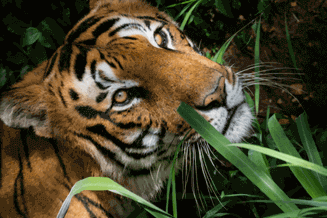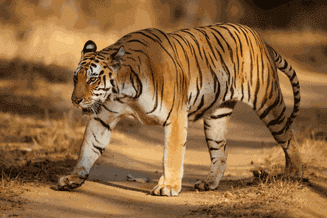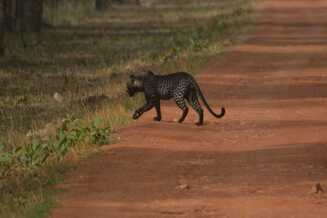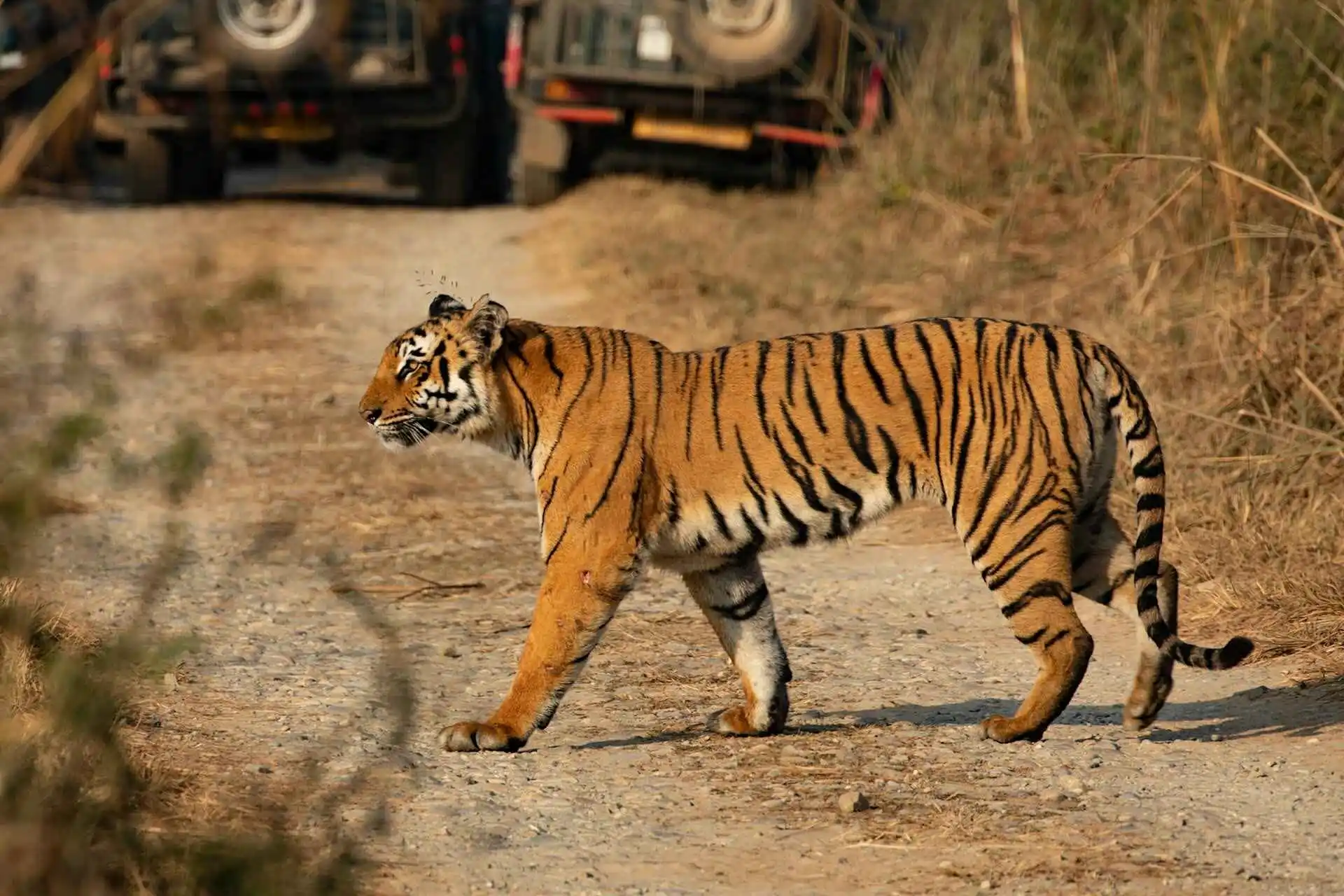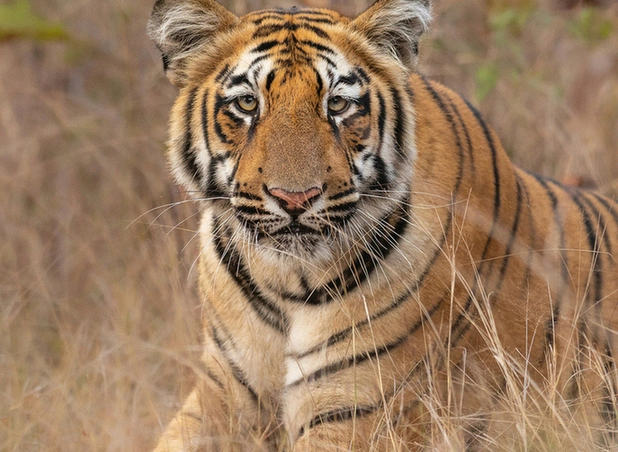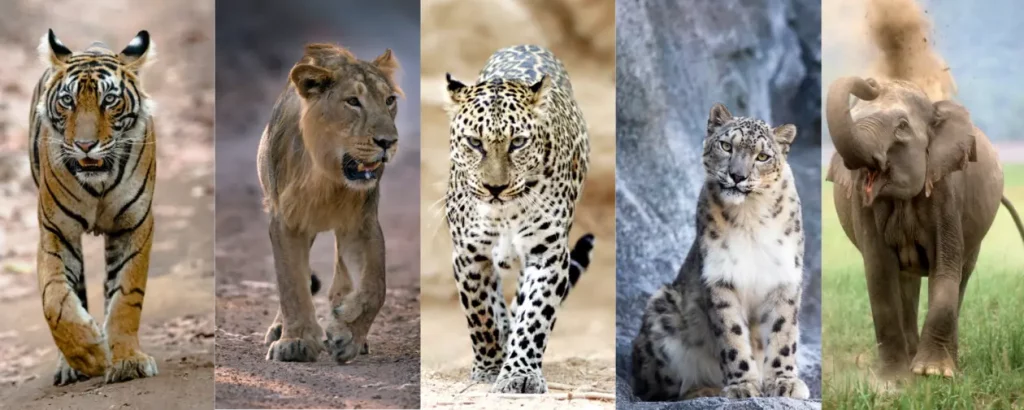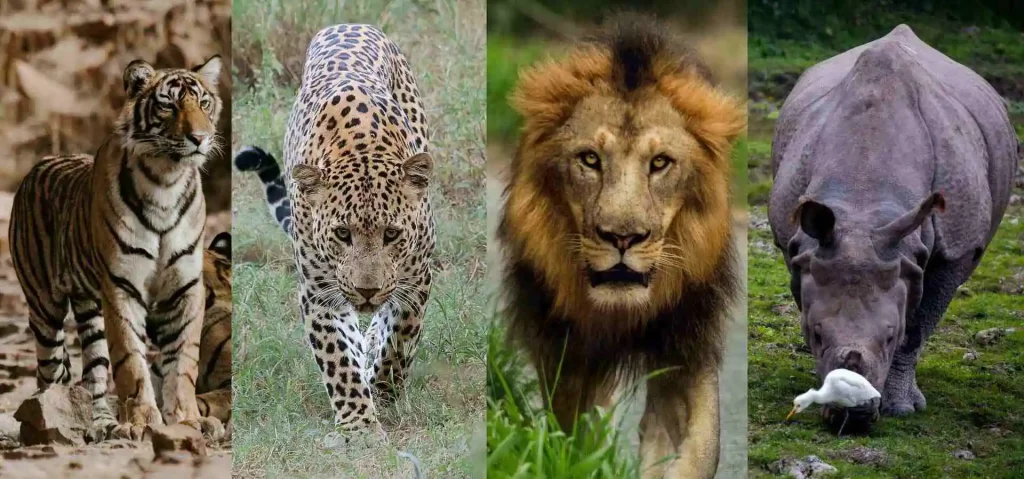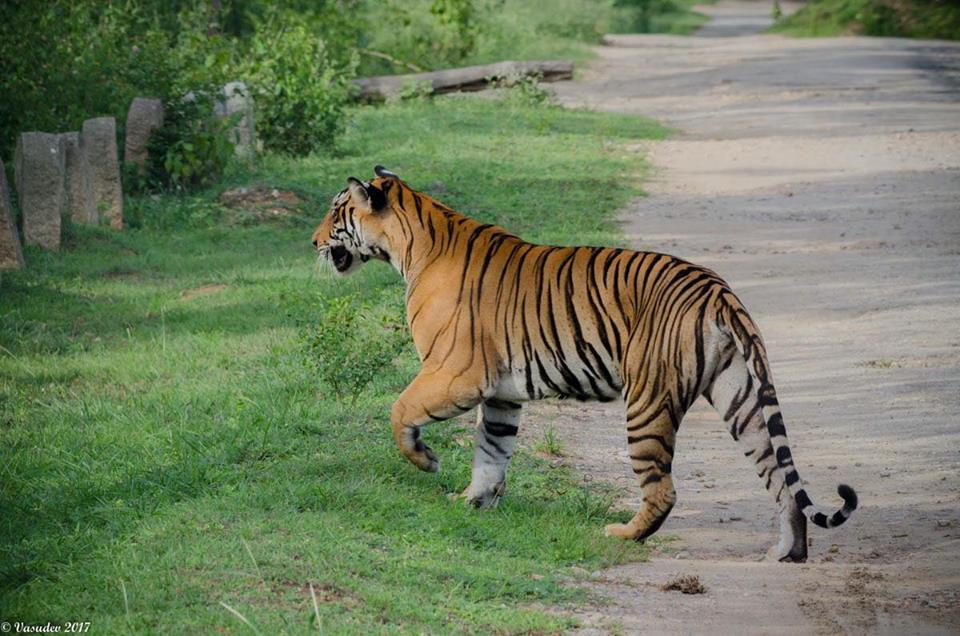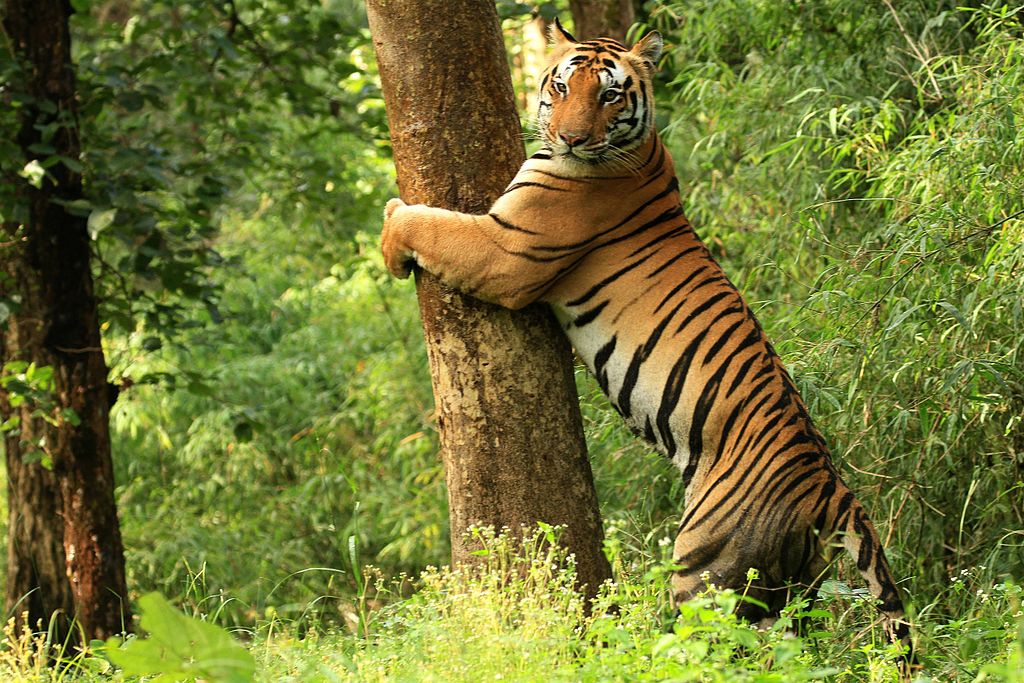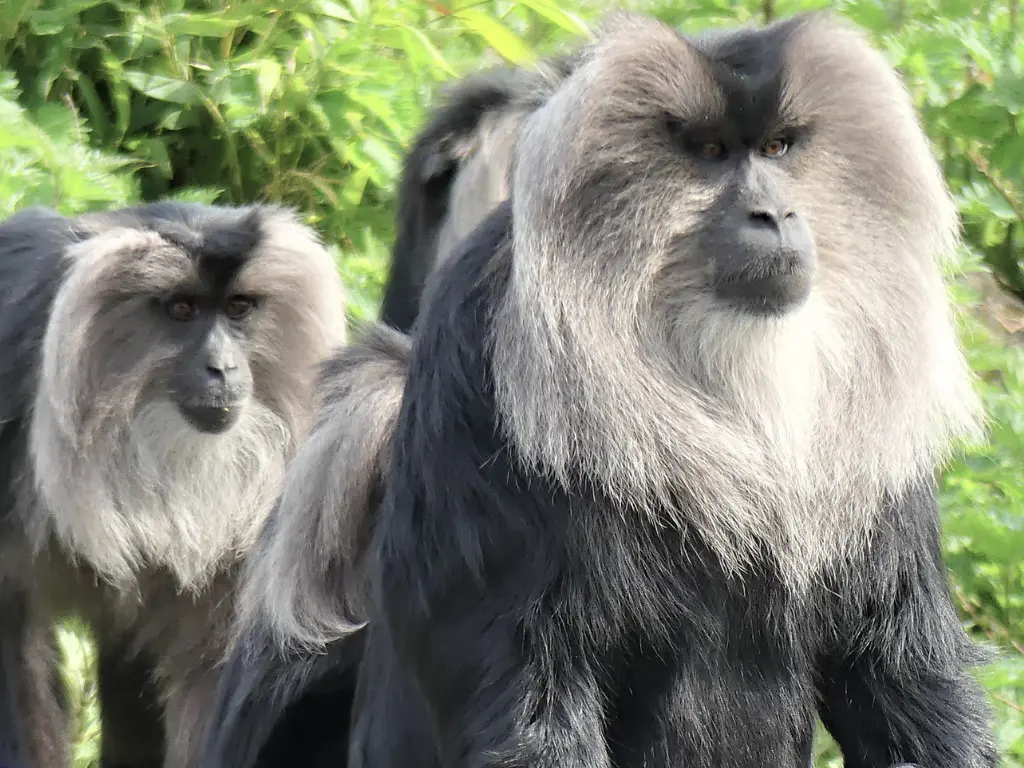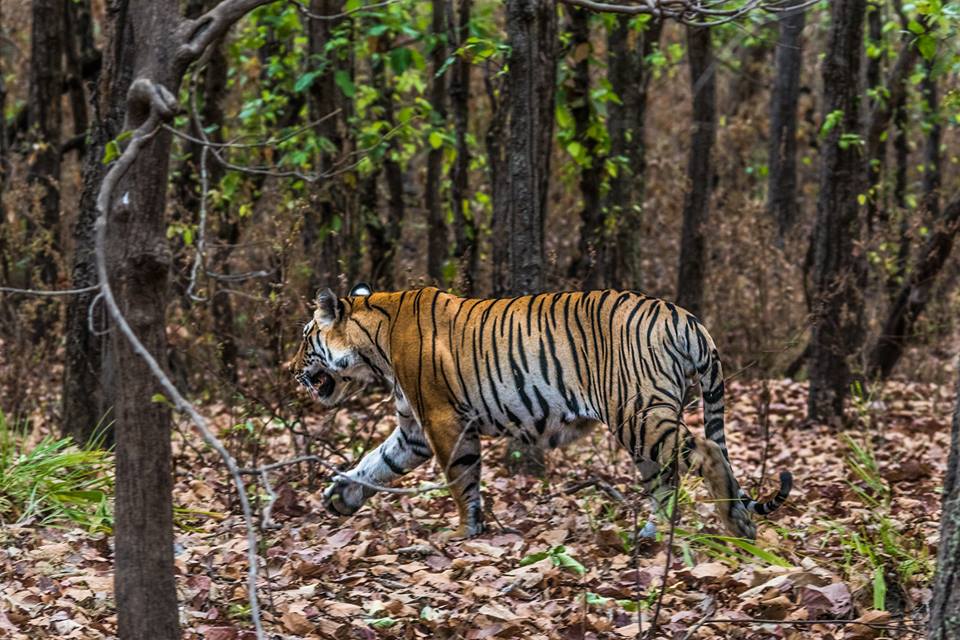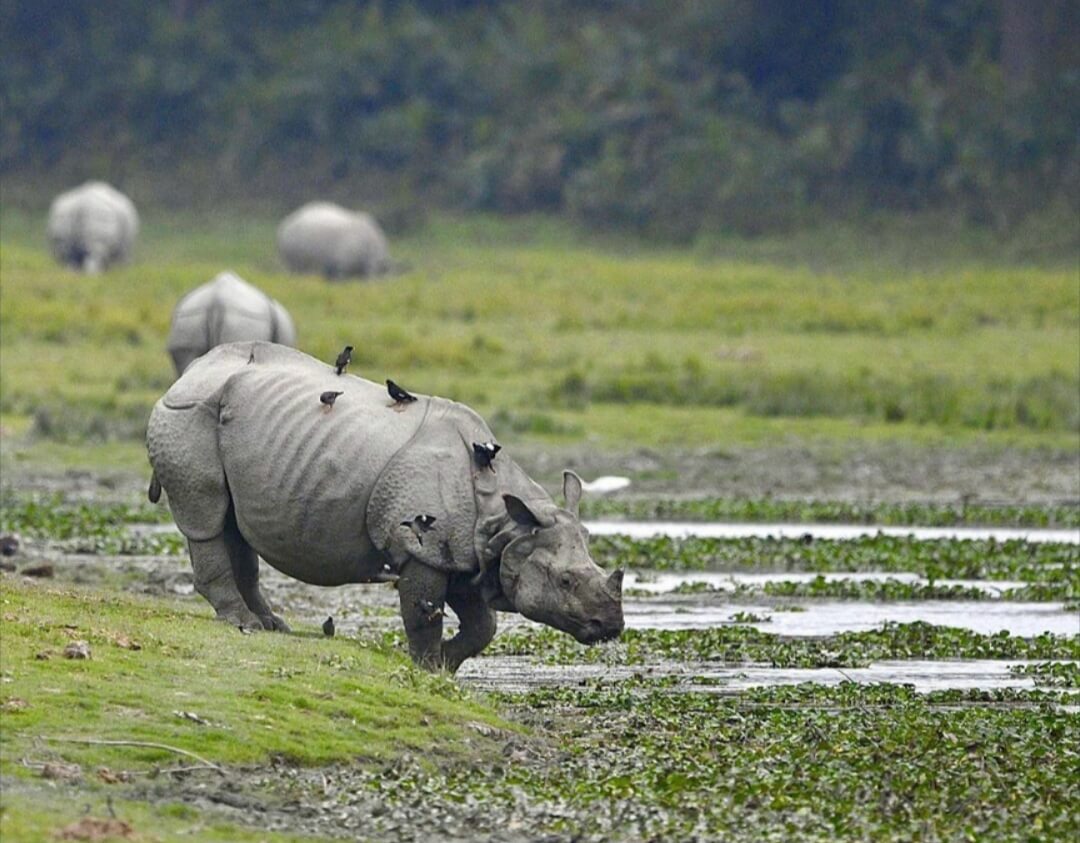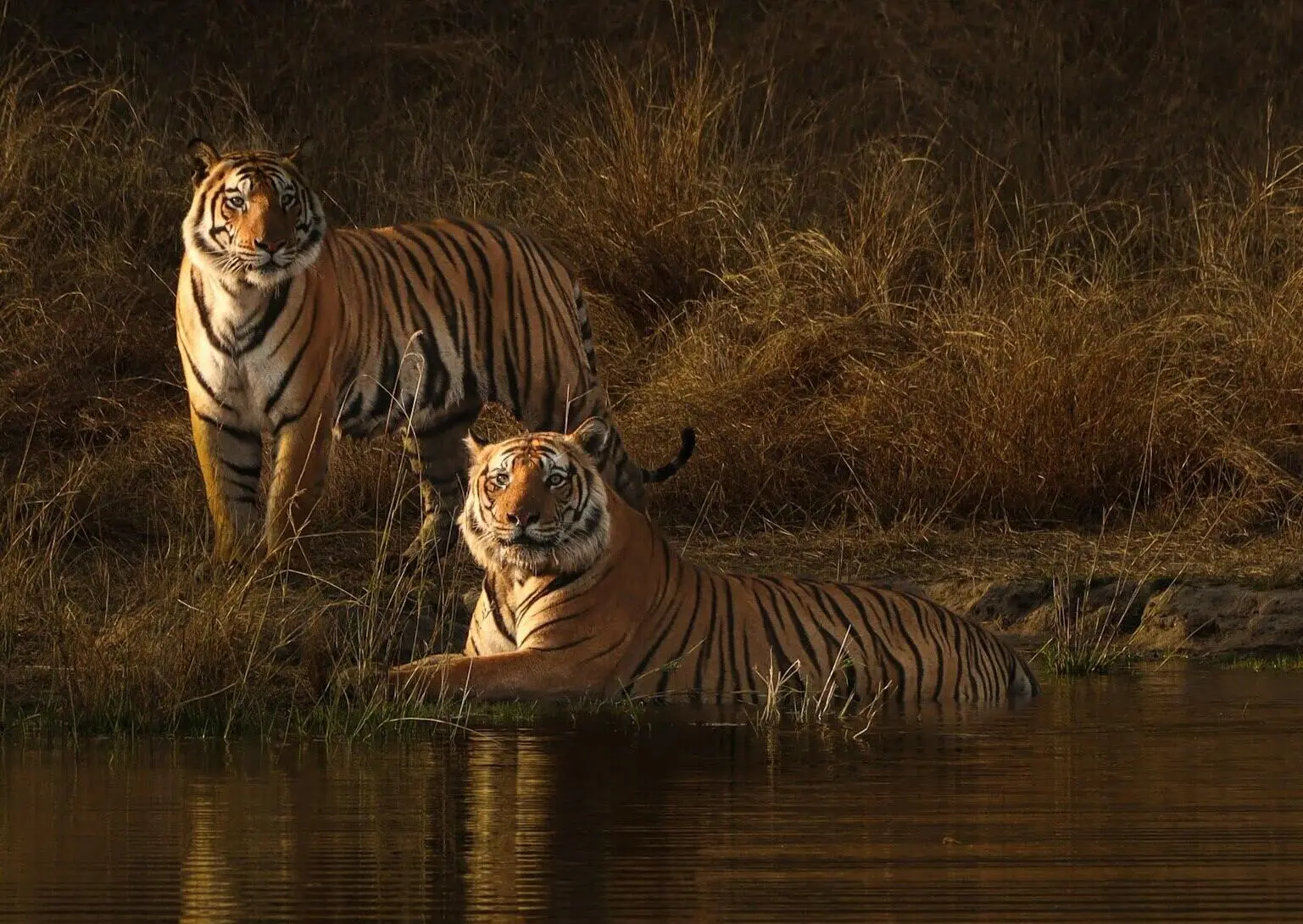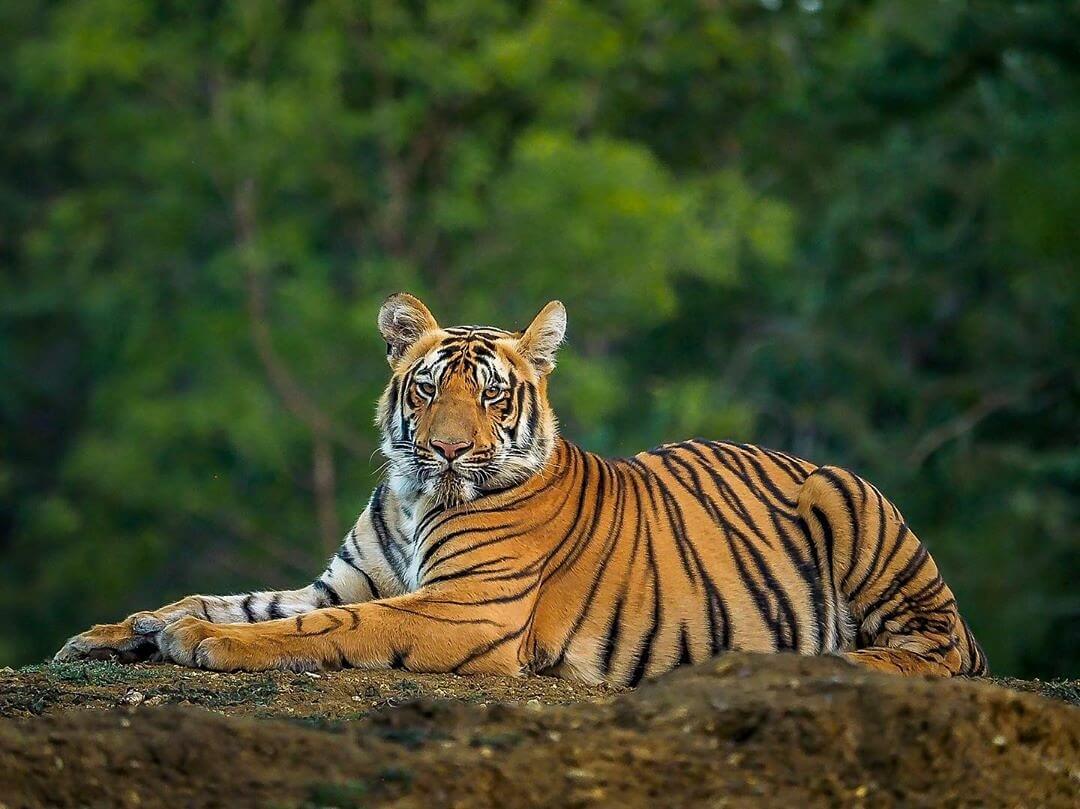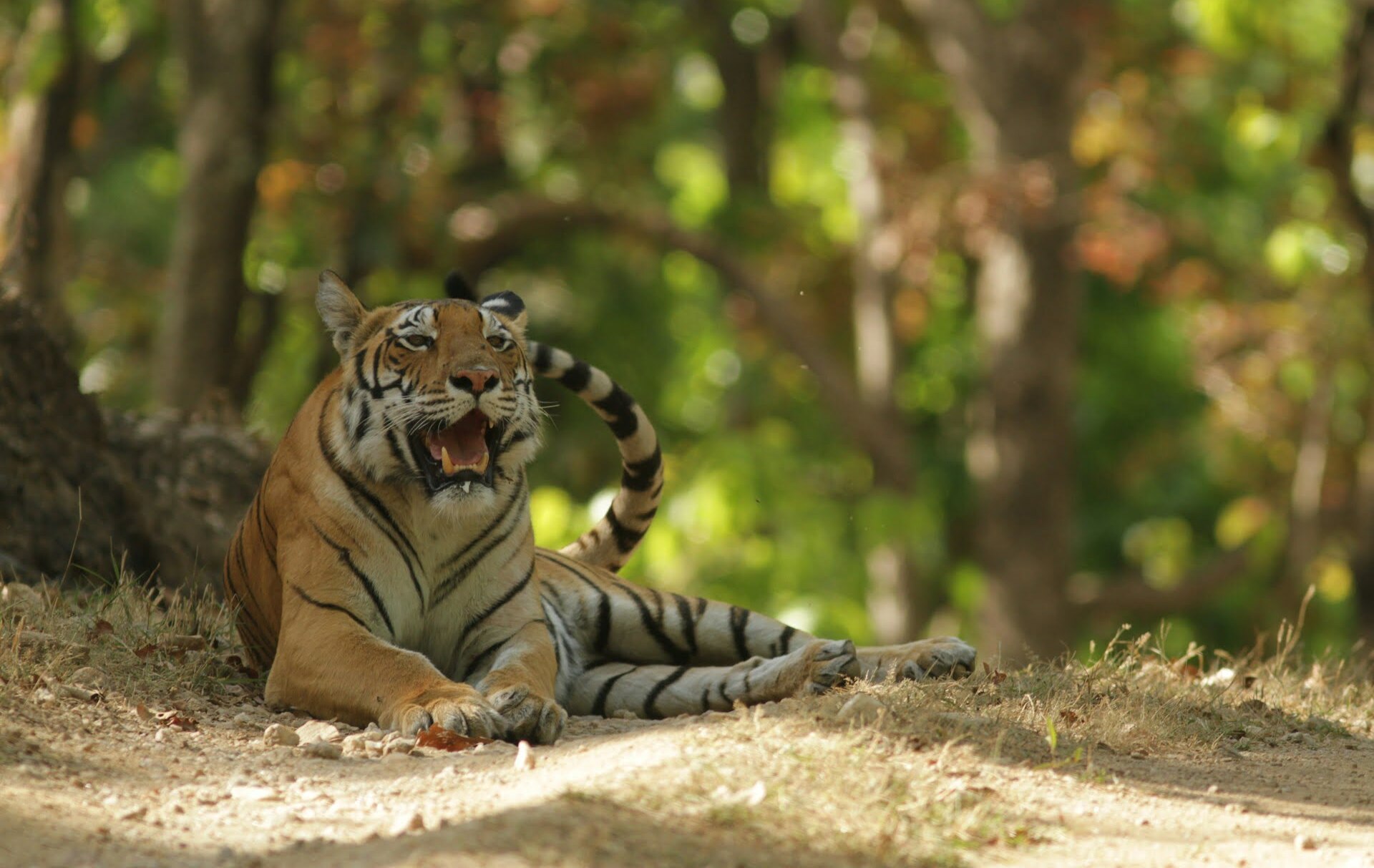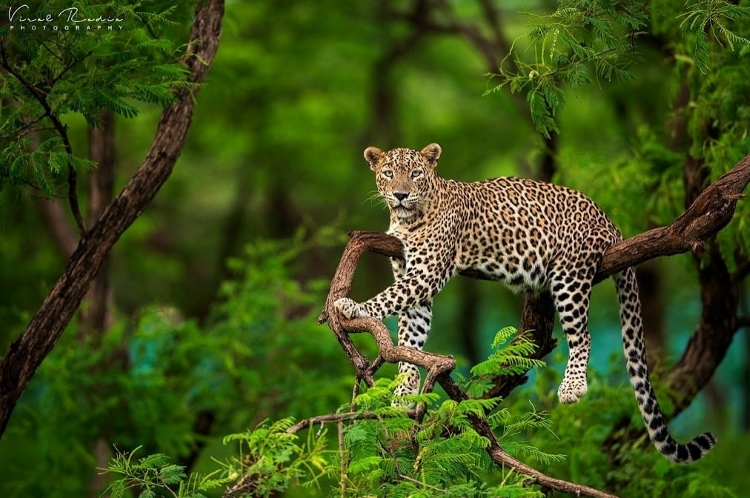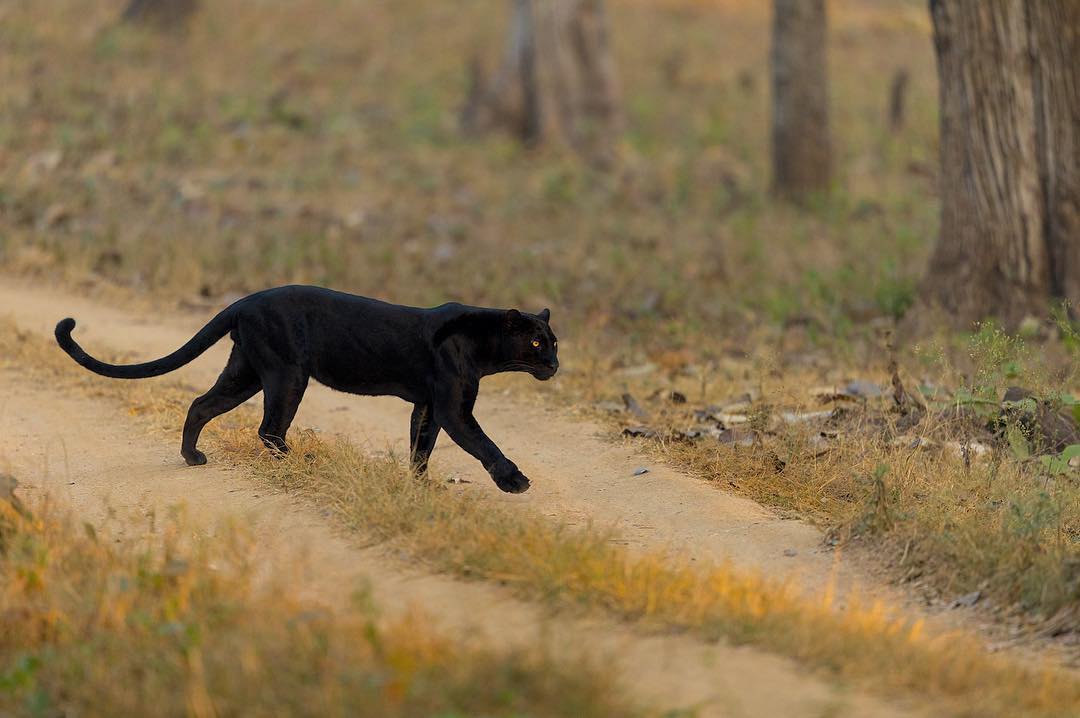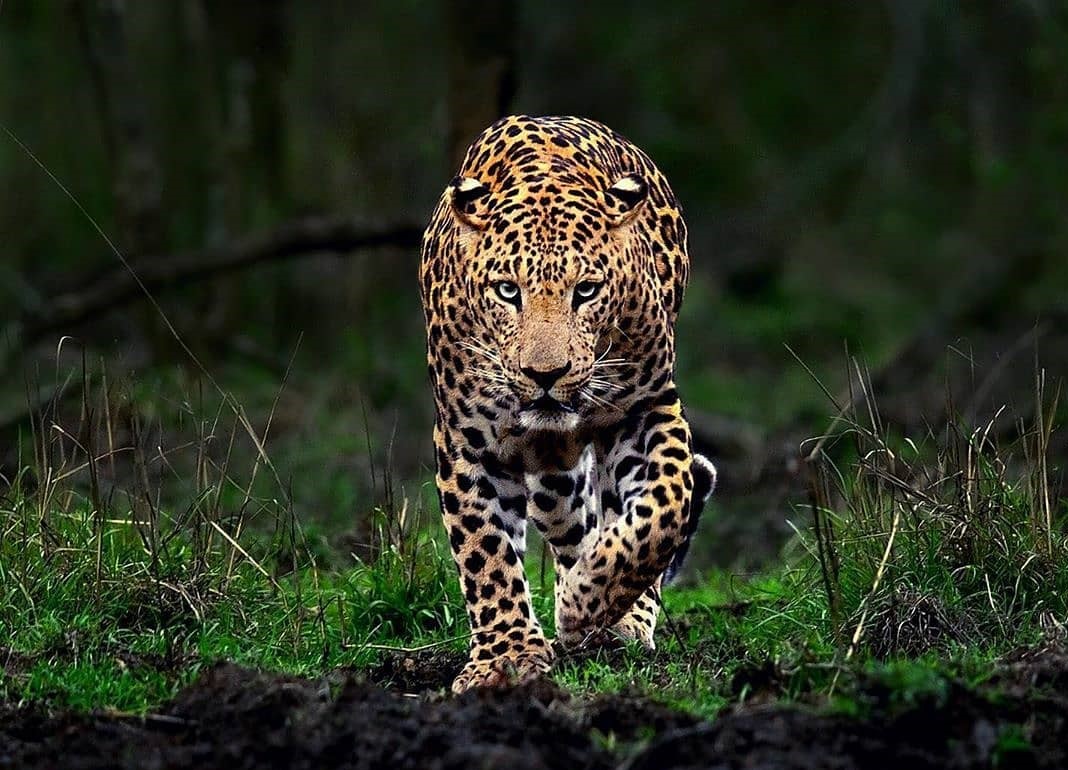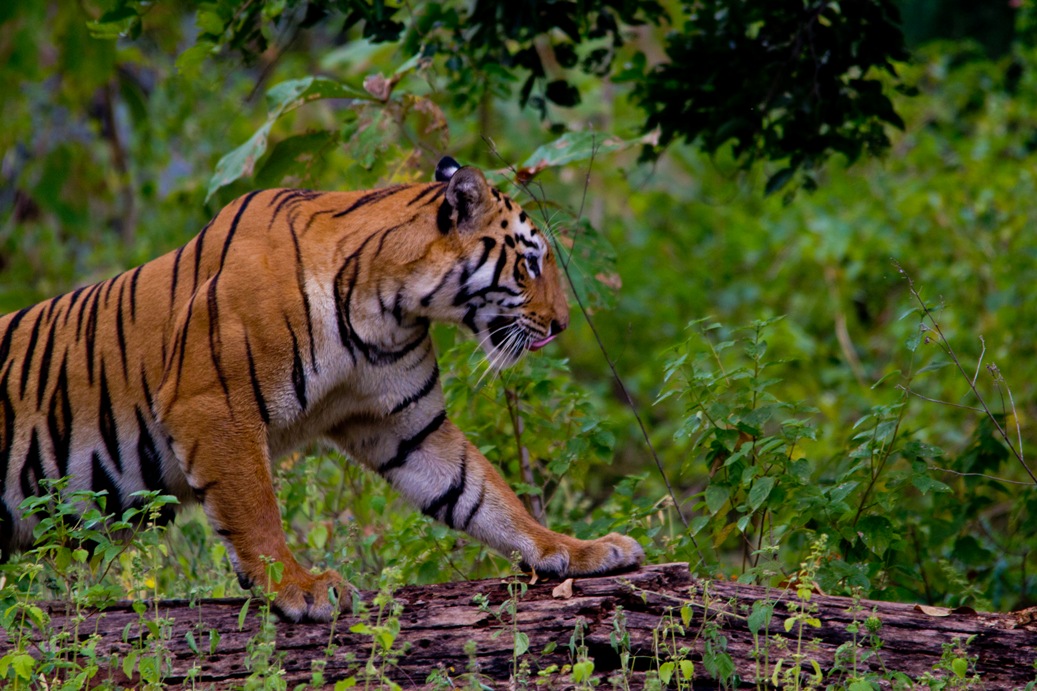Planning a tiger safari but not sure whether to choose Ranthambore or Bandhavgarh?
Both parks are world-famous for close encounters with tigers, yet they couldn’t feel more different. Ranthambore brings open grasslands, rugged cliffs, and a fort that rises above the forest. Bandhavgarh offers thick Sal woods, quiet valleys, and one of the highest tiger densities in the country. Each has its own pace, charm, and style of safari. Let’s break down the differences so you can pick the one that matches your travel plans.
Two Icons of India’s Tiger Country
Ranthambore is in Rajasthan, about 1,334 square kilometres in size, with a core zone of 392 square kilometres. Known for its mix of dry forest, open meadows, and ancient ruins, it’s one of the most photographed parks in India.
Bandhavgarh lies in Madhya Pradesh, covering about 1,536 square kilometres with a smaller core area of 716 square kilometres. It’s famous for its hilly terrain, dense Sal forests, and meadows rich with deer.
Both are part of central India’s tiger belt but feel completely different once you’re inside them.
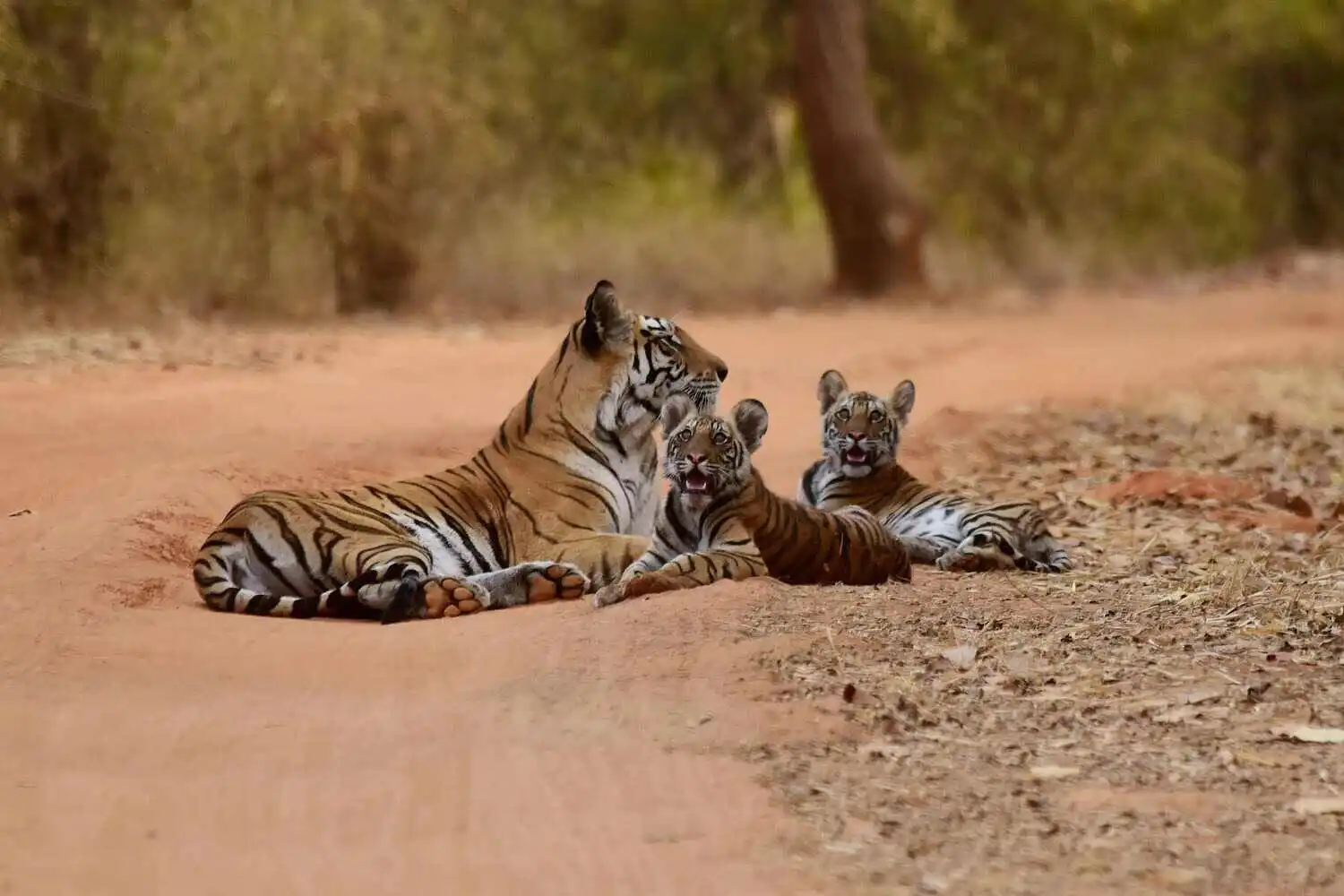
Tigress with her cubs in Bandhavgarh
Wildlife Showdown
Tiger Sightings
Both parks are top choices for seeing tigers.
Ranthambore’s open terrain and waterholes make sightings easier even from a distance. Bandhavgarh’s smaller core has one of the highest tiger densities in India, but its dense forest means sightings are often closer and more dramatic.
Other Wildlife
Ranthambore is home to leopards, sloth bears, marsh crocodiles, jackals, and over 300 species of birds. Its dry forests and lakes attract a mix of resident and migratory species, making it a rewarding spot for birdwatchers.
Bandhavgarh also shelters leopards, along with wild dogs (dholes), Indian gaur, and rich birdlife. The striking Malabar pied hornbill is one of its most recognisable avian residents.
Best Time to Visit
Ranthambore
The park is open from October to June. Summer months (April to June) are hot but offer the best chances of seeing tigers near waterholes. Winter brings cooler weather and greener scenery, making drives more comfortable.
Bandhavgarh
Open from October to June, with March to May being the most rewarding for tiger sightings. Early mornings are pleasant, and winter offers soft light and misty landscapes that are perfect for photography.
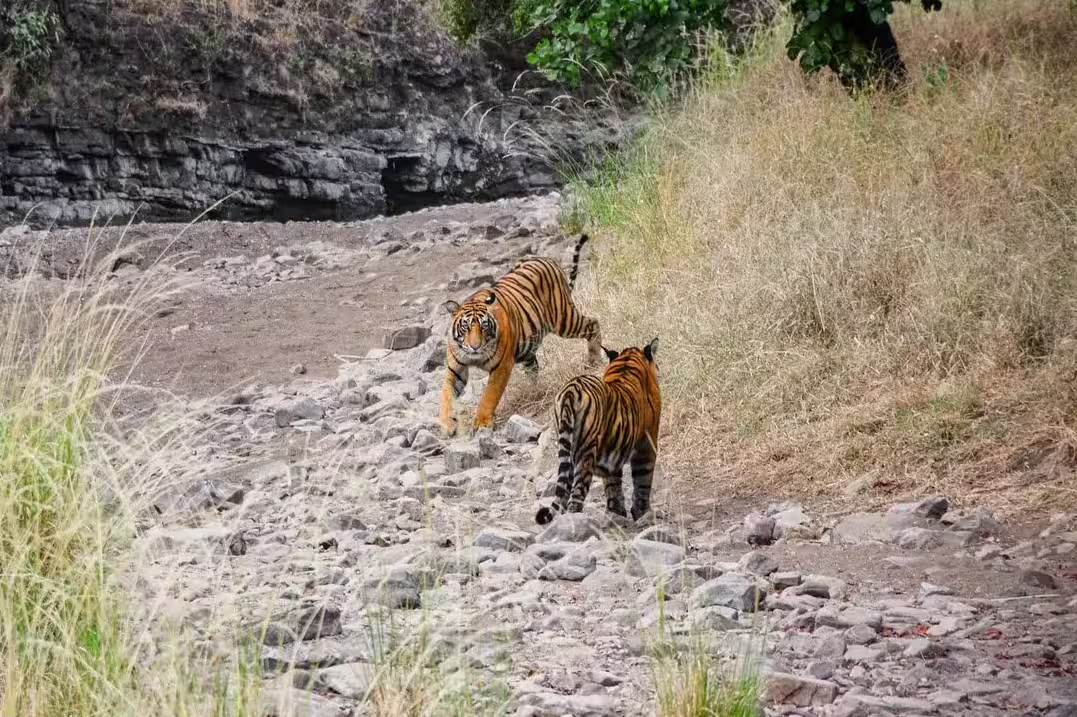
Tiger cubs playing in Ranthambore
Safari Experience
Accommodation Options
Ranthambore offers a wide range: heritage hotels, luxury resorts, and budget lodges. Some stays overlook the park’s edges or sit near Ranthambore Fort.
Bandhavgarh leans towards nature-based stays – eco-lodges, tented camps, and boutique resorts set in quiet forest surroundings.
Crowd Levels
Ranthambore is busier, especially in Zones 1-5 during peak season. Bandhavgarh, though popular, feels quieter with more relaxed safari traffic.
Landscape & Viewing Style
Ranthambore’s open spaces and scattered ruins create a unique backdrop for photography.
Bandhavgarh’s drives wind through forested hills, offering a more immersive “inside the jungle” feeling.
Costs and Accessibility
Ranthambore is one of the most accessible tiger reserves. The nearest airport is Jaipur, about 3.5 to 4 hours by road. The nearest railway station is Sawai Madhopur, just 20-30 minutes from the park. From Delhi, it takes around 6-6.5 hours by train or road. This makes Ranthambore a convenient choice if you are arriving in Delhi or Jaipur, or if you plan to combine your safari with the Golden Triangle (Delhi-Agra-Jaipur).
Bandhavgarh requires more travel but offers a more secluded experience. The nearest airport is Jabalpur, about 3.5 to 4 hours away. Katni and Umaria are the closest railway stations, with Umaria just 45 minutes to 1 hour from the park. Visitors arriving in central India, or those planning to explore Panna, Khajuraho, or Orchha, will find Bandhavgarh a better fit.
In terms of cost, Ranthambore can be slightly more expensive during peak season due to high demand and its popularity among both domestic and international tourists. Bandhavgarh offers a wide range of stays, from budget lodges to luxury resorts, often with better value during non-holiday periods.
Culture and Heritage
Ranthambore has a deep connection to Rajasthan’s history. The centuries-old Ranthambore Fort, perched on a hill inside the park, offers sweeping views of the landscape and tells stories of battles and royal hunting grounds.
Bandhavgarh is steeped in legend. The ruins of the Bandhavgarh Fort, believed to be over 2,000 years old, sit on a high hill inside the reserve. The name “Bandhavgarh” means “Brother’s Fort,” linked to tales from the Ramayana. Ancient caves, carvings, and temples scattered through the park add a layer of cultural intrigue to your wildlife trip.
Comparison Table
| Feature | Ranthambore | Bandhavgarh |
|---|---|---|
| Size | 1,334 sq km (392 sq km core) | 1,536 sq km (716 sq km core) |
| State | Rajasthan | Madhya Pradesh |
| Nearest Airport | Jaipur International Airport (160 km) | Jabalpur Airport (160 km) |
| Nearest Railway Station | Sawai Madhopur (14 km) | Umaria (37 km) |
| Best for Tiger Sightings | ★★★★★ | ★★★★★ |
| Landscape | Dry deciduous, open grasslands, rocky hills | Sal forest, hills, meadows |
| Best Season | Oct-Jun (peak Apr-Jun) | Oct-Jun (peak Mar-May) |
| Accessibility | Better from Delhi/Jaipur | Better from Jabalpur/Katni |
| Crowd Levels | Higher | Lower |
| Cost | Slightly higher in season | More varied budget options |
| Accommodation | Heritage hotels, luxury resorts, budget stays | Eco-lodges, boutique resorts, tented camps |
Popular Ranthambore and Bandhavgarh Safari Packages
Tour Packages which includes Ranthambore
Tour Packages which includes Bandhavgarh
Which is Right for You?
Choose Ranthambore if:
- You have limited time.
- You want a mix of heritage and wildlife.
- You enjoy photographing animals in open settings.
- You prefer shorter travel from major cities.
- You plan to explore Jaipur, Agra, or the Golden Triangle, then Ranthambore fits perfectly into this route.
Choose Bandhavgarh if:
- You want fewer crowds.
- You enjoy dense forest drives and scenic landscapes.
- You’re aiming for longer stays focused purely on wildlife.
- You’re interested in spotting wild dogs or gaur in addition to tigers.
- You plan to visit Panna, Khajuraho, or Orchha, then we prefer to combine it with Bandhavgarh for a seamless wildlife and cultural experience.
Both Ranthambore and Bandhavgarh deliver some of the best tiger sightings in India. If time and budget allow, many wildlife lovers visit both on a single trip starting with Ranthambore for its iconic landscapes and ending in Bandhavgarh for its rich, quiet forests. Whichever you choose, you’ll be exploring one of India’s most treasured wildlife habitats.

